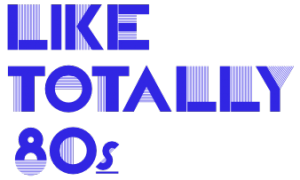Discover the lasting impact of 80s educational TV shows and how their fun, engaging methods can still benefit today’s learners in a digital world.
Modern education, while enhanced by technology, sometimes overlooks the importance of making learning fun and accessible. The core ideas from 80’s shows can easily be applied to modern teaching, both in the classroom and on digital platforms. A lot of inspiration drawn from these classics by educators today results in content that is interesting as much as it is informative, hence making students enjoy learning. These programs remind us that curiosity is a powerful tool, and fostering that curiosity can lead to a lifetime of learning.
The Golden Age of Educational TV in the 1980s
80s educational shows made sure kids learned useful stuff without it feeling boring. Square One TV made math exciting with games and funny skits, while 3-2-1 Contact showed how science is part of everyday life. The idea was simple: teach real skills, but keep it fun.
Developing real skills today requires a lot of time and effort. Getting all the help you need will go a long way in helping you achieve your academic goals. You don’t have to do all your assignments on your own. It’s easier to pay someone to do my homework especially when time is not on your side than to struggle with everything. When you get essay help from experts, you’ll get good grades and still have time to develop new skills. You’ll pick up important concepts without even struggling. The 80s might be quite a distant memory by now but its educational shows carry lessons that are equally relevant today.
Educational Techniques Used in 80s TV Shows
Visual Learning
The heavy use of visuals, music, and friendly characters in these shows worked wonders back then, and it’s still relevant in today’s world. Fast forward to today, and visual learning is more important than ever. Kids are surrounded by screens, whether it’s a tablet, a phone, or a computer, and they expect learning to be as dynamic as their entertainment.
The techniques used by 80s educational TV shows—bright visuals, interactive segments, and relatable characters—can still be adapted to modern-day learning tools, making education feel as exciting as the digital content students consume daily. We can take notes from how those 80s shows used colorful scenes, lively music, and hands-on demonstrations to make things stick in kids’ minds. Education in the 80s compared to now was amazing.
The Power of Storytelling
A big part of what made children’s educational tv shows 80s great was how they used stories to explain things. Be it LeVar Burton introducing a new book in Reading Rainbow or a math lesson enacted in the form of a skit in Square One TV, stories made learning more related. It is still one of the best ways to teach especially when it’s combined with essay writing. It helps connect abstract ideas to real life. That’s a technique that should never go out of style.
What Today’s Learners Can Gain
Techniques employed by educational TV in the 80s, such as fun-infused learning, storytelling, and engaging multiple senses can retain value. Educators today can take a cue from the past to create dynamic and interactive lessons that students will be drawn into just as much
How Modern Education Can Incorporate 80s TV Show Techniques
Integrate Entertainment and Education
Acting as a trip down memory lane for many individuals, 80s programs were designed to entertain kids and yet they served an educational purpose by making learning fun through the use of humor and catchy music. That same energy can still work today in classrooms or on learning platforms. Kids learn best when they’re engaged, and those shows knew how to do just that.
Inspire Curiosity
What set these shows apart was how they inspired kids to keep asking questions and explore the world around them. They didn’t just dump facts on kids—they encouraged curiosity. Shows like Reading Rainbow sparked a love for reading, while 3-2-1 Contact made science feel like an adventure. This approach of encouraging curiosity is something modern education can’t ignore. Kids who stay curious about the world are more likely to become lifelong learners, and that’s something we should all aim for.
Challenges and Limitations
While 80s educational TV shows brought innovation to learning, they also faced challenges and limitations. These programs were designed for a broad audience, making it hard to address individual learning needs. Since they aired on fixed schedules, students couldn’t control the pace of their learning or revisit content easily. Furthermore, some subjects required more depth than these shows could provide in their short formats. Despite the challenges of education in the 80s compared to now, their overall impact on making education fun remains influential.
Conclusion: Bringing the 80s Back: Timeless Lessons for Today’s Learners
In a world where technology is shaping how we learn, the core lessons from 1980s kid shows still have a place. They remind us that learning can be fun, engaging, and full of discovery. Today’s digital tools provide more ways to engage learners than ever, but the core of what made those shows work is so vital.
